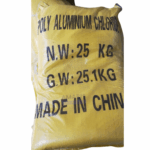


Microscope mirror holder
$300.00 Original price was: $300.00.$220.00Current price is: $220.00.
Poly Aluminum Chloride 25kg
Whatsapp Order
Poly aluminium chloride (PAC) is a water treatment chemical compound that is used to purify and clarify water. It is a coagulant that works by destabilizing and aggregating suspended particles in water, which makes them easier to remove by sedimentation or filtration. PAC is often used as an alternative to traditional aluminum sulfate (alum) and ferric chloride in water treatment, due to its lower required dosage and higher efficiency in removing impurities such as suspended solids, organic matter, and colloidal particles. It is a highly effective and cost-efficient solution for treating both industrial and municipal water.
SKU:
ACS82339CHEM0-1
Category: OTHERS
Description
Uses of Poly Aluminum Chloride
- Water Treatment Studies:
- Jar Tests: PAC is frequently used in jar tests to evaluate its coagulation and flocculation efficiency in different water samples. This helps in determining the optimal dosage and conditions for water treatment processes.
- Comparative Analysis: Researchers use PAC to compare its effectiveness against other coagulants like alum or ferric chloride in removing turbidity, color, and contaminants from water.
- Wastewater Treatment Research:
- Flocculation Mechanisms: Laboratories investigate the mechanisms of flocculation with PAC to understand how it interacts with various pollutants and suspended solids in wastewater.
- Sludge Volume Reduction: Studies focus on the reduction of sludge volume and characteristics of sludge produced when using PAC, aiming to improve sludge management and disposal practices.
- Chemical Synthesis and Analysis:
- Synthesis of Al-Based Compounds: PAC can be a precursor or reagent in the synthesis of other aluminum-based compounds used in various industrial and laboratory applications.
- Catalysis Research: PAC is studied as a potential catalyst or co-catalyst in certain chemical reactions, especially those involving polymerization or hydrolysis processes.
- Environmental Monitoring:
- Pollutant Removal Efficiency: Research labs use PAC to study its effectiveness in removing heavy metals, organic pollutants, and other harmful substances from contaminated water sources.
- Ecotoxicological Studies: The impact of PAC-treated water on aquatic organisms is assessed to ensure that its use does not adversely affect ecosystems.
- Material Science:
- Surface Treatment: PAC is used in experiments related to surface modification and treatment of materials, enhancing properties like hydrophilicity or corrosion resistance.
- Nanomaterials Research: It plays a role in the preparation and stabilization of aluminum-based nanomaterials for various applications, including catalysis and adsorption.
- Quality Control and Standardization:
- Product Testing: Laboratories use PAC to test the quality and performance of water treatment chemicals, ensuring compliance with industry standards and regulations.
- Calibration Standards: PAC solutions are prepared as calibration standards for analytical instruments used in water and wastewater analysis.
Additional information
| COUNTRIES OF ORIGIN |
CHINA |
|---|
Reviews (0)
Be the first to review “Poly Aluminum Chloride 25kg” Cancel reply
Related products
Bondex Polytex 50H 250 kg Drum
Cellozize (Tylose) 25kg bag
Tylose refers to a type of modified cellulose, also known as hydroxyethyl cellulose, that is commonly used as a thickening agent, stabilizer, and emulsifier in a variety of industrial and food applications. It is a white, odorless, and tasteless powder that is soluble in water and forms a clear or slightly turbid solution. Tylose is commonly used in the food industry to improve the texture and consistency of various products such as ice cream, sauces, dressings, and baked goods.
Citric Acid Anhydrous 25kg
Citric acid is a weak organic acid that occurs naturally in citrus fruits such as lemons, limes, oranges, and grapefruits. It is a tricarboxylic acid with the chemical formula C6H8O7 and is commonly used as a food additive, preservative, and flavoring agent. Citric acid is also used in the pharmaceutical industry, as a chelating agent in cleaning and personal care products, and in the production of cosmetics and detergents. It is a white crystalline powder with a sour taste and is soluble in water.
Cobalt Octoate 10% 200kg Drum
Cobalt octoate is a chemical compound that consists of cobalt ions (Co2+) bound to octoate ions (also known as octanoate ions, C8H15O2-). It is often used as a catalyst in various chemical reactions, particularly those involving the curing of unsaturated polyester resins and the polymerization of vinyl chloride. Cobalt octoate can also be used in the production of coatings, adhesives, and inks.
In its pure form, cobalt octoate appears as a dark blue liquid with a characteristic odor. It is soluble in a variety of organic solvents and is typically sold as a solution in mineral spirits or other solvents. The concentration of cobalt octoate in these solutions can vary depending on the intended use, with concentrations typically ranging from 1% to 12%.
Formalin (Formaldehyde) 35kg
Formaldehyde is a colorless gas with a pungent odor, which is used as a disinfectant, preservative, and in the production of various materials and chemicals.
Formalin is a solution of formaldehyde gas in water, typically containing 37% formaldehyde by volume. It is commonly used as a tissue preservative in biological specimens for medical and research purposes. Formalin is also used in various industrial applications such as manufacturing plastics, resins, and textiles.
Formic Acid 85% 25 kg Jerrycan
Formic acid is a colorless, pungent liquid with a chemical formula of HCOOH. It is the simplest carboxylic acid, naturally occurring in certain fruits and vegetables and in the venom of some ants. It has a wide range of industrial applications as a preservative, antibacterial agent, solvent, and in the production of textiles, leather, rubber, and other materials. It also has some medical applications and is used in organic chemistry reactions as a reducing agent. However, formic acid is highly corrosive and can be dangerous if ingested or inhaled in large quantities.







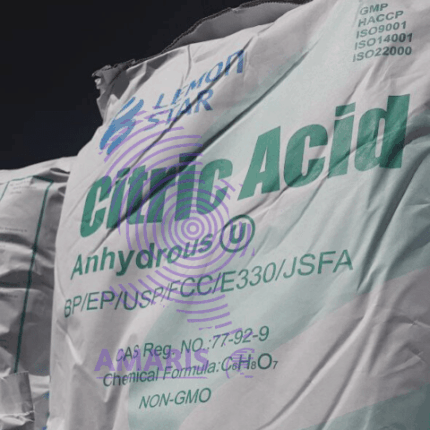

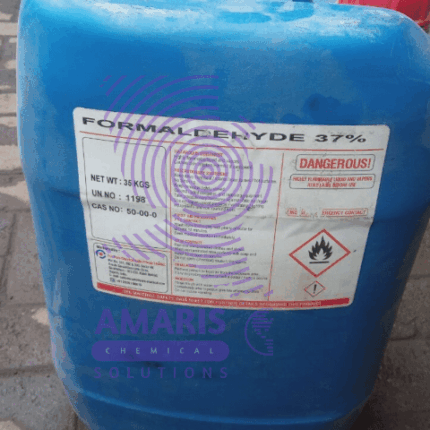
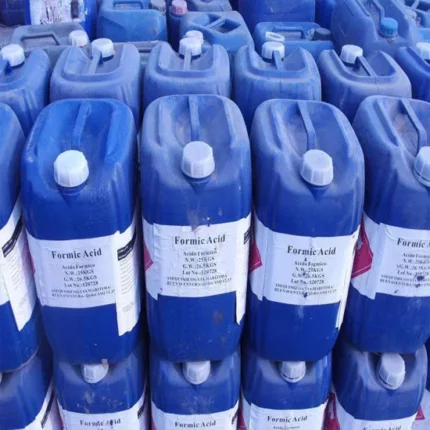

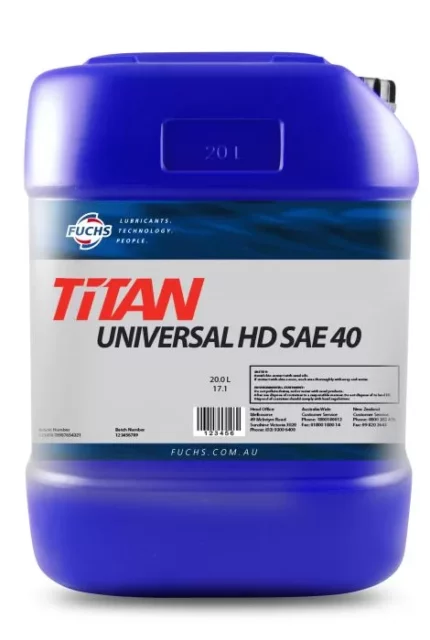













Reviews
There are no reviews yet.